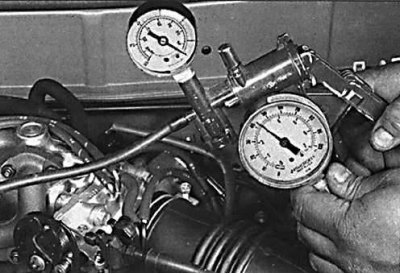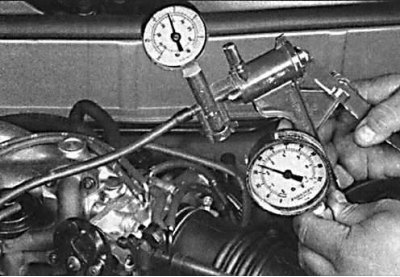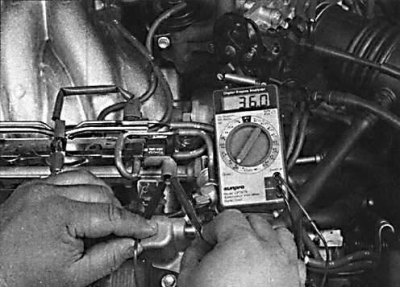Vacuum changeover valve location (VSV) on the engine

 |  |
1. Disconnect the vacuum hose from the fuel pressure regulator and connect a manual vacuum pump with a pressure gauge instead. Start the engine and measure the fuel pressure with no vacuum applied to the pressure regulator. Using a manual vacuum pump, create a vacuum and re-measure the pressure in the fuel system. As the vacuum applied to the pressure regulator increases, the pressure in the fuel system should decrease.

2. Reconnect the vacuum hose to the pressure regulator and check the pressure in the fuel system at idle speed. Disconnect the vacuum hose from the pressure regulator, while the pressure in the fuel system should increase sharply to maximum. If the pressure in the fuel system at idle speed is too high, connect a pressure gauge to the vacuum hose and check the vacuum. If there is no vacuum, check the condition of the switching vacuum valve (VSV).

3. Using an ohmmeter, check the resistance between the vacuum switch valve terminals, which should be between 30 and 40 ohms.
4. Using an ohmmeter, check that the switching vacuum valve windings are not connected to ground.
5. If the pressure in the fuel system is too low, pinch the fuel return line and measure the pressure. If the pressure does not increase, then the fuel pump is faulty. If the pressure in the fuel system rises sharply, replace the fuel pressure regulator.
